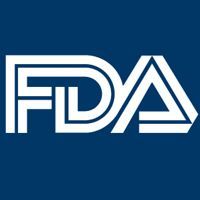Article
Cryo most cost-effective fertility preservation strategy
Cryopreservation is far more cost-effective than post-treatment surgical sperm extraction and assisted reproductive technology for men with testis cancer who desire fertility preservation, new data show.
Sperm cryopreservation is a far more cost-effective fertility preservation strategy than post-treatment surgical sperm extraction and assisted reproductive technology (ART) for men with testis cancer undergoing chemotherapy or radiation therapy, according to an analysis conducted by urologists at Emory University, Atlanta.
“Too often, men with testis cancer are deciding not to cryopreserve sperm because they are being misinformed about the cost of cryopreservation, the recovery of spermatogenic function after cancer therapy, or the success rates for ART. They are being told that sperm cryopreservation is expensive, and microdissection testicular sperm extraction (microTESE) combined with ART is a reliable option if they have no sperm in the ejaculate after completing cancer therapy,” said senior author Akanksha Mehta, MD, MS, of Emory University School of Medicine.
Read - Urologists show low adherence to value-based care pathway
“Our research shows that sperm is not always found at the time of microTESE among testis cancer survivors, and even if it is, banking sperm upfront has a far lower cost-per-pregnancy than microTESE combined with ART, even when sperm is banked for several years. Therefore, we encourage physicians to consistently counsel patients to bank sperm. It is not only more cost-effective, but men will benefit psychologically knowing they have sperm in the bank before beginning gonadotoxic treatment.”
The analysis, presented at the AUA annual meeting, was performed using a decision tree constructed with the TreePlan add-in for Microsoft Excel. Cost-effectiveness of sperm banking and microTESE for chemotherapy and radiation therapy cohorts was calculated as the cost-per-pregnancy. The analyses took into account risk of azoospermia and rate of natural conception associated with each of the two cancer treatment options along with the rates of conception for intrauterine insemination (IUI) and in vitro fertilization/intracytoplasmic sperm injection (IVF/ICSI) using data identified from a search of the published literature.
Next: What the authors found
The cryopreservation costs used-$402 for an initial fee and $343/year-were based on published fees from commercial sperm cryobank companies. Sensitivity analyses considered microTESE costs ranging from $3,000 to $11,000 and sperm banking durations between 2 and 10 years.
Also see: Online information linked to PCa treatment regret
Azoospermia rates after chemotherapy and radiation therapy were 18% and 6%, respectively. For the radiation therapy analysis, cryopreservation was consistently more cost-effective than microTESE for all scenarios, regardless of the number of years banked or cost of microTESE. For the chemotherapy group, cryopreservation was the more cost-effective alternative except in analyses using highly discounted costs for surgical sperm extraction that are probably unrealistic, Dr. Mehta told Urology Times.
“Results of our sensitivity analyses favored microTESE only when its cost was in the $3,000 to $5,000 range,” he said. “More typically, however, the cost is in the $8,000 to $10,000 range for total out-of-pocket expenses. After adding in the cost of IVF, which is between $12,000 and $15,000 per cycle, sperm banking is far more cost-effective, no matter the duration, and despite the lower success rate of IUI for cryopreserved sperm compared with IVF/ICSI for surgically extracted sperm.”
More from Urology Times:
5-ARIs linked to increased risk of self-harm, depression
Most men prefer informed decision-making for PCa
Why men are not immune to eating disorders
To get weekly news from the leading news source for urologists, subscribe to the Urology Times eNews.





